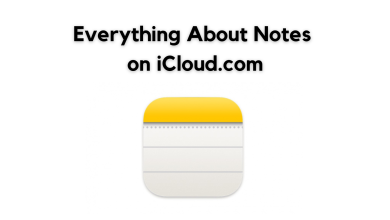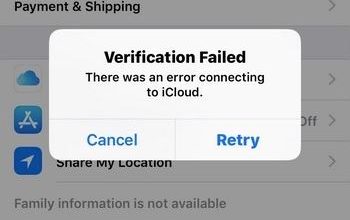How to Fix “Try Uploading the File Again Later” in iCloud?
Many iCloud users faced a ‘try uploading the file again later’ error when uploading the files/folders to the iCloud Drive website through a browser, especially, when dragging and dropping the files on the iCloud website. The issue is nearly reported on nearly all types of browsers like Chrome, Safari, Edge, Firefox, etc., and all the major desktop operating systems like macOS, Windows, Linux, etc. Moreover, the issue is reported on different types of files like PDF, JPEG, etc.

A user may fail to upload a file to iCloud due to many factors and outlining all these factors is not possible but the following ones are can be categorized as the main ones:
- Public Network Profile of the System: If a system’s network profile is set to Public, then due to security concerns on a public network, the system or iCloud website may not let a user upload the files to iCloud by using the public network.
- Tracking Protection of the Browser: If a browser is configured to block tracking from the iCloud website, then that may not let the iCloud Drive website complete the upload process as the iCloud is required to track the upload progress in the browser but the browser may not let it happen.
- ISP Restrictions: A user may encounter the file uploading error on iCloud Drive if the ISP is not properly passing the traffic between the device and iCloud servers or if Apple does not trust a particular ISP at that point of time due to security issues e.g., an ongoing DDoS attack on a particular ISP.
- Interference from the System’s Security Application: If the data packets exchanged between the device or iCloud servers have become corrupt due to the security application (like 360 Total Security antivirus) interference with the data packets, then that may cause the iCloud uploading issue under discussion.
Perform a Cold Restart of the System and Networking Equipment
A user may fail to upload files to iCloud if a temporary communication glitch is not letting the device properly communicate with the iCloud servers. Here, performing a cold restart of the system and networking equipment may solve the iCloud issue.
Before going on to that router, make sure there is enough storage available on iCloud as a full iCloud Drive may also cause the issue at hand. Moreover, make sure the file type being uploaded to the iCloud is supported by Apple e.g., MXF video files are not supported to upload to iCloud Drive.
- Power off the system and networking equipment (like a router or Wi-Fi extender).
- Now unplug the power cables of both devices and wait for 5 minutes.
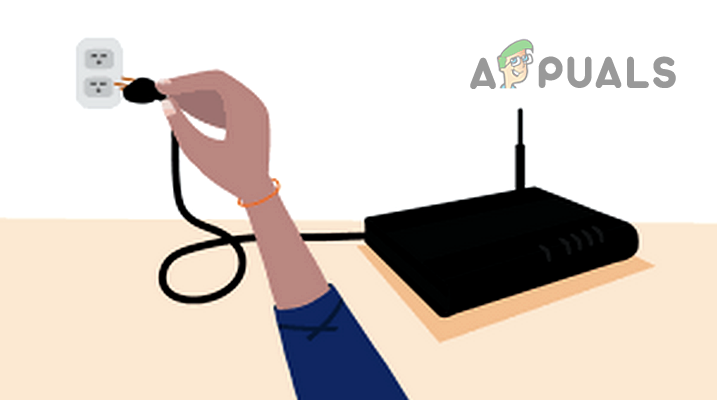
Unplug the Router from the Power Source - Then plug back the router’s power cord and power on the router.
- Now, wait till the router is properly powered on, and then plug back the system’s power cord.
- Then power on the system and afterward, check if the iCloud uploading issue is resolved.
Change the System’s Current Network Profile to Private
If the network in use on the system is set to Public, then the safety measures of the system or iCloud on a public network may not let the upload process complete and cause the issue at hand. In this scenario, changing the current network profile to Private (if the network is a trusted one) may solve the problem. For elucidation, we will discuss the process of changing the network profile to Private on a Windows 11 PC.
- Exit the browser and close the iCloud or browser-related processes in the system’s Task Manager.
- Then click on the network icon in the system’s tray and click on the right-direction button of the network.
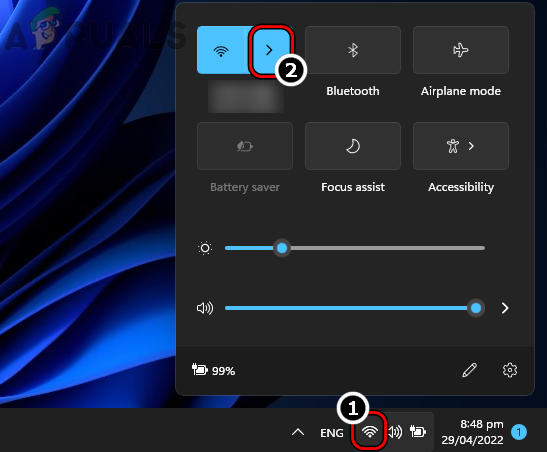
Open Manage Wi-Fi Network from the System’s Tray on Windows 11 - Now click on the i icon (information icon) for the network connection and in the resulting window, select the radio button of Private.
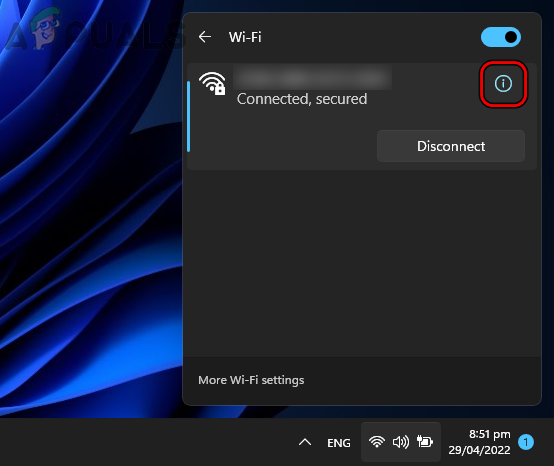
Open the Network Properties by Click on the Information Icon - Then launch the browser and check if the files can be uploaded by dragging/dropping on the iCloud website.
Trust the Problematic Browser When Signing into the iCloud Website
If a user did not trust a browser when signing into the iCloud website, then the iCloud website may not let the user upload files from that browser due to authentication issues. In this case, trusting the problematic browser (if trusted by the user) when signing into the iCloud website may solve the problem.
- Launch a web browser and head to the iCloud website.
- If already signed into the iCloud website, then in the top right corner, click on the user’s name and select Sign Out.
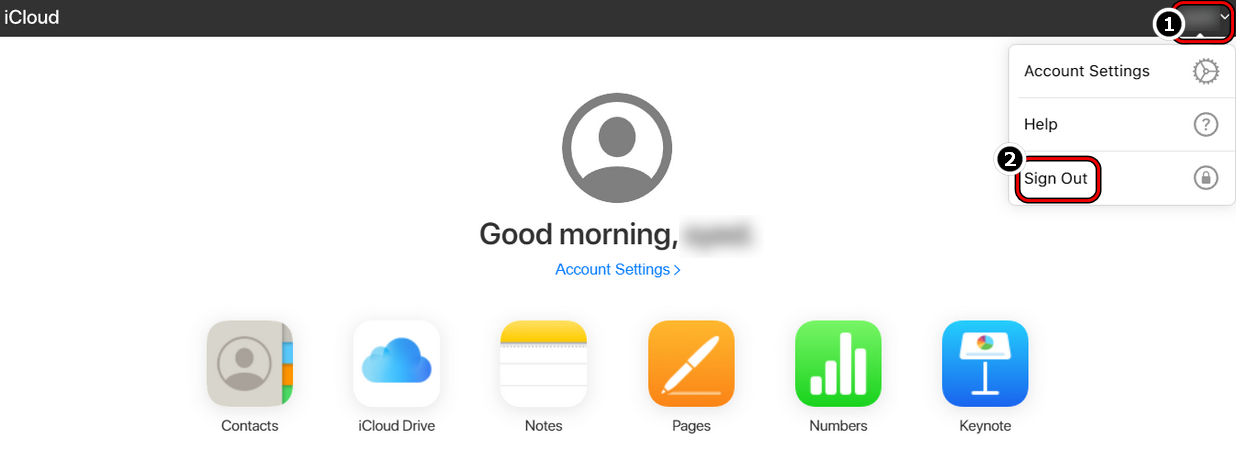
Sign Out of the iCloud Website - Once signed out, again sign in to the iCloud website and when asked to, select Trust This Browser.
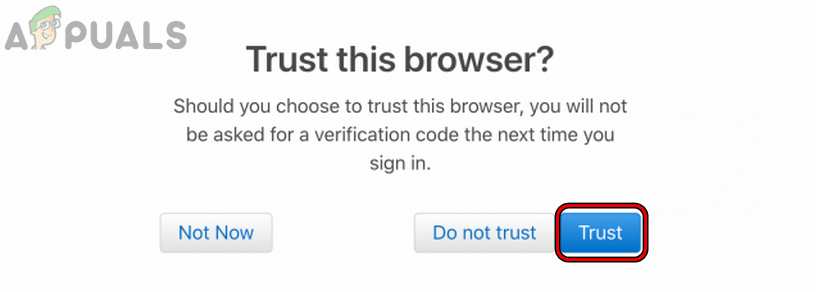
Trust a Browser When Signing into the iCloud Website - Afterward, check if try uploading the file again later error of iCloud is cleared.
Disable Tracking Protection of the iCloud Website
Many privacy-concerned users enable tracking protection to safeguard their online privacy but this tracking protection may stop the iCloud website to complete the upload operation as iCloud Drive fails to track the upload progress and may cause the issue at hand. Here, disabling the tracking protection of the browser for the iCloud website may solve the problem. For elucidation, we will discuss the process of disabling the Tracking Protection of the Firefox browser for the iCloud website.
- Launch the Firefox browser and head to the iCloud website.
- Now log into the iCloud website and afterward, in the Firefox address bar, click on the Shield icon.
- Then disable the Enhanced Tracking Protection is ON for this site feature by toggling its switch to the off position.

Disable Enhanced Tracking Protection is ON for iCloud on Firefox - Now reload the iCloud page and check if its upload problem is cleared.
Try Another Browser
If the browser in use is not compatible with the iCloud website, then that may not let the iCloud upload files as the essential website modules fail to operate on the browser. In this case, trying another browser may force iCloud to upload the files.
- Download and install another browser on the PC (if already not present).
- Now launch the newly installed browser and head to the iCloud website.
- Then log into iCloud and check if the drag and drop of the files are clear of the uploading error.
- If that fails, then check if the user can upload to the iCloud through the upload icon (not by dragging and dropping) on the website.
Try Another Network or Use a VPN
An iCloud user may encounter try uploading the file again later issue if the ISP’s hindrance is not letting the data packets be properly parsed by the client or iCloud servers. Here, trying another network or using a VPN may clear the iCloud uploading problem.
- Exit the problematic browser and end the browser or iCloud-related processes in the system’s Task Manager.
- Then download and install a VPN client on the problematic system.
- Now launch the VPN client and connect to a preferred location.
- Then launch the browser and check if the iCloud drag/drop uploading issue is resolved.
- If not, close the VPN client and disconnect the system from the current network.
- Now repeat step 1 to close the browser/iCloud and then connect the system to another network (like a hotspot from the mobile phone).

Enable Hotspot of Your Phone - Then launch the browser and head to the iCloud website to check if its drag/drop uploading issue is cleared.
Disable the System’s Antivirus and Firewall
If the system’s antivirus or firewall is hindering the web traffic between the system and iCloud servers, then that may not let the iCloud website complete its operation by corrupting the iCloud data packets and thus cause the uploading issue at hand. Here, disabling the system’s antivirus and firewall may clear the iCloud issue. For illustration, we will discuss the process of disabling the ESET antivirus/firewall.
Warning:
Advance with extreme caution and at your own risk as disabling the system’s antivirus or firewall may expose the system, network, or data to threats.
- Exit the problematic browser and end any of the browser or iCloud processes (like iCloud Drive) in the system’s Task Manager.
- Then expand the hidden icons of the system tray and right-click on the ESET product.
- Now, in the menu shown, click on Pause Protection and then select the time interval to disable the ESET protection (like 10 minutes).
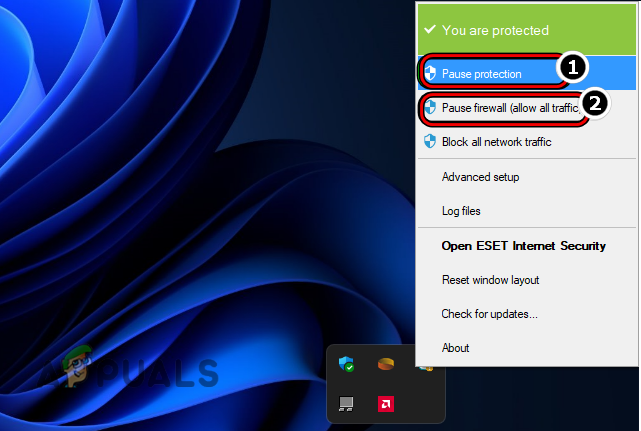
Pause ESET Protection and Firewall - Again, right-click on the ESET product in the system’s tray and select Pause Firewall.
- Then confirm to disable the ESET Firewall and check if the iCloud uploading problem is cleared.
If that fails, then a user may install the iCloud drive on the system and use it to upload the files/folders to iCloud (drag/drop operation is supported on the iCloud Drive through the File Explorer’s left sidebar). If a user cannot install the iCloud Drive (e.g., on a corporate machine), then he may upload the files to another service (like Google Drive) and sync that to his iPhone. Then by using the iPhone’s Files, he may transfer the problematic files to the iCloud. If that is not an option, then a user may upload the problematic files to iCloud from another system/device (if possible). If that is not as per the user’s requirements, then he may use a USB to transfer the files from the system to his iPhone and upload the files to the iCloud through his iPhone.
